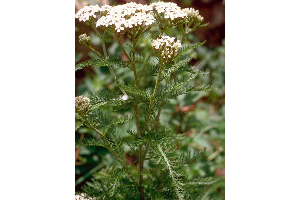Common yarrow has been used as a medicinal plant for over 3000 years.
Photo Credit: © William S. Justice. Courtesy of Smithsonian Institution, Dept. of Systematic Biology, Botany.
Achillea millefolium
Common Name: common yarrow
Other Common Names: bloodwort, carpenter's weed, hierba de las cortaduras, milfoil, plumajillo, western yarrow, yarrow (common)
Plant Functional Group: Forb
Class > Order > Family: Magnoliopsida > Asterales > Asteraceae
